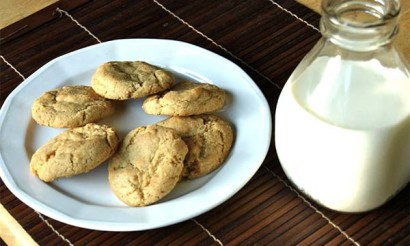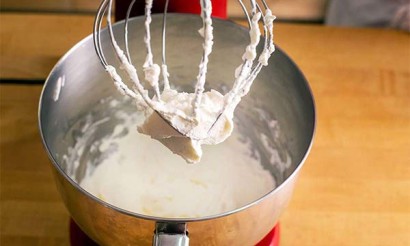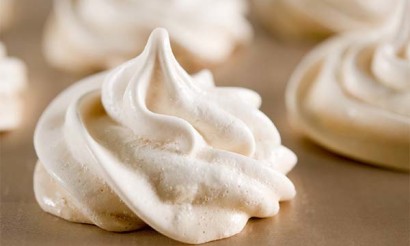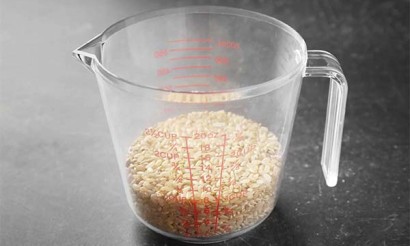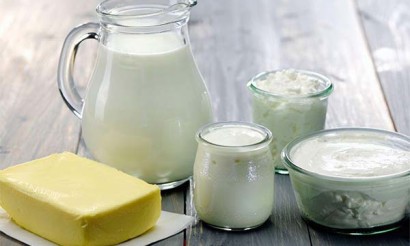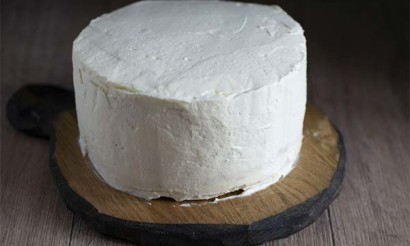How to tell if the cottage cheese is bad? The main signs
Natural product, rich in calcium, is good for health, recommended by nutritionists, but spoils quickly, as the process of oxidation continues during storage. To protect yourself from food poisoning, you should create optimal storage conditions, consume cottage cheese with a current expiration date.
Signs of Spoiled cottage cheese
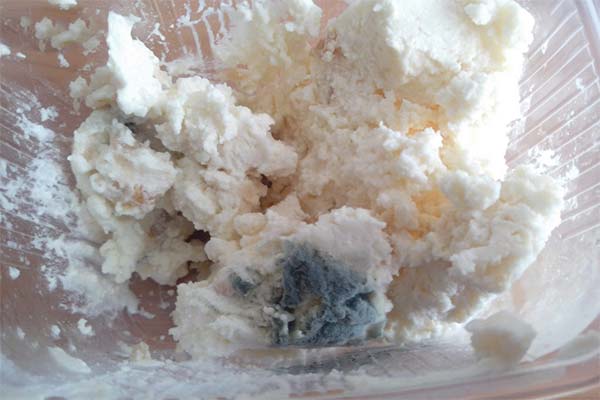
Clear signs of spoiled product - moldy spots, sour or repulsive musty smell, bitterness in taste. The normal color of fresh curd is white; a yellowish, creamy color is acceptable with high fat content. If, however, the grains have become deep yellow, dark spots appear, fluffy mold, the cottage cheese must be disposed of.
Product unfit for food is recognized not only by color, odor and taste. A characteristic sign of inedible curd - heterogeneous structure, consisting of dry and slimy lumps.
Can I eat expired food?
A live product has a limited shelf life. Consumption of stale or improperly stored cottage cheese threatens serious food poisoning, dangerous to health. This applies especially to products with pronounced signs of spoilage.
If the expiration date has not affected the organoleptic properties, cottage cheese can be used in home cooking, but only after heat treatment.
Symptoms of poisoning and first aid
A few hours after the consumption of spoiled product, symptoms of intoxication occur:
- headache;
- weakness;
- dizziness;
- burping, nausea, vomiting;
- fever;
- diarrhea with greenish frothy stools;
- intestinal cramps of various localizations;
- tachycardia.
Procedure for first aid before the doctor arrives:
- Gastric lavage. The victim is given a few glasses of clean warm water to induce vomiting by pressing on the root of the tongue.
- enema. To speed up the elimination of toxins, in the absence of diarrhea do a purging enema.
- Taking absorbents. Intoxication load is reduced by taking activated charcoal (1 tablet per 10 kg of weight), Enterosgel, Polysorb, Smecta according to instructions.
To replenish fluid loss, after each attack of vomiting or bowel emptying the poisoned person is offered to drink small sips of a glass of warm water.
How to Choose Fresh Cheese when Buying
The choice of cottage cheese depends not only on its freshness, but also on the fat content, further use. The most popular varieties with a rich dairy flavor contain 9-22% milk fat. For children the appropriate fat content is 0-2%. Pregnant doctors do not recommend eating cottage cheese with a fat content greater than 9%.
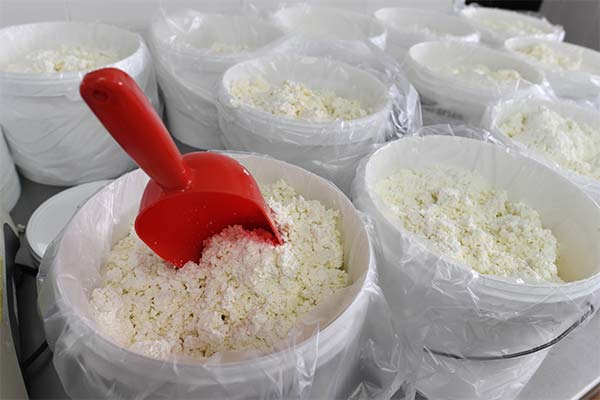
Characteristics of fresh product:
- pleasant dairy flavor;
- White (up to 18% fat) or creamy-yellow color (with more than 18% fat)
- Slightly sour taste;
- grainy, crumbly structure;
- the current expiration date indicated on the package.
When milled, quality cottage cheese changes texture and leaves greasy spots on your fingers. You should not buy a product of heterogeneous consistency and with liquid in the package. The reason for heterogeneity is a violation of production technology. The presence of liquid can be explained by violations of storage rules in retail outlets. Whey is released with temperature changes, while the acidity increases.
Shelf life and conditions
Shelf life of perishable dairy product depends on the temperature, its fat content, packaging. Long preservation of taste, useful properties provides curd vacuum packing - 1 month at a temperature of 5 ° C.
In glass and enamelware the product does not spoil for up to four days. Wrapped in parchment, foil and placed in a container keeps 30 hours.
To prolong the preservation period, the cottage cheese is tightly tamped, displacing air or covered with a napkin soaked with a strong salt solution.
In the refrigerator
A refrigerator with a temperature of 0-6°C and humidity of 75-80% is the best place to store the product. Choose the shelf nearest the freezer to extend its shelf life. Homemade cottage cheese with a fat content of 19% or more retains its freshness for just one day, semi-fat cottage cheese for 2 days, defatted cottage cheese for 72 hours, and store-bought loose cottage cheese for 36 hours.
The maximum allowable shelf life in the refrigerator - four days. Packaged cottage cheese bought in the store, save up to the date specified by the manufacturer on the package.
In the freezer
Before storing in the freezer curd split into single portions, packed hermetically in bags or containers. Negative temperatures do not change the taste of the product, but reduce the content of useful substances by three times.
At t - from -18 ° C cottage cheese is preserved for up to two months. If the chamber is cooled from 0 to -15 degrees, the consumer properties are preserved for a couple of weeks.
Defrost the product gradually. First, it is transferred to the shelf of the refrigerator. After 5 hours, leave it on the kitchen table until it is completely thawed.
Without a fridge
At a temperature of 15-25 degrees, cottage cheese remains fit to eat for 4-6 hours. If the product is kept near a radiator, under direct sunlight or near a stove on, the term is cut in half.
What you can make from expired cottage cheese

To protect yourself from pathogenic bacteria, sour cottage cheese with an expired shelf life of no more than 5 days is used as part of heat-treated dishes. Expired cottage cheese is used to make processed cheese for spreading on bread, puffy pancakes, and delicious cheesecakes with condensed milk.
If the dairy product is not greasy, and the expiration date is not more than three days, it use it for baking pies with apples, cottage cheese cookies, diet casseroles, frying yeast doughnuts, tortillas.
Protein is the most attractive environment for bacteria. Therefore, choose cottage cheese carefully, pay attention not only to the date of manufacture and expiration date, but also to the conditions of storage in the store.
«Important: All information on this site is provided for informational purposes only. purposes only. Before applying any recommendations, consult a specialist. specialist before using any of the recommendations. Neither the editors nor the authors shall be liable for any possible harm caused by materials."

